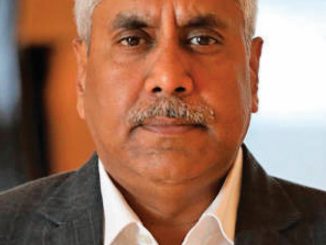At the COP26 summit in Glasgow, India declared one of the most ambitious targets by a developing country to combat climate change. The goal: to achieve net zero carbon emissions by 2070, announced by Prime Minister Narendra Modi on November 1, 2021. Further, by 2030, the country aspires to augment non-fossil fuel electric capacity to 500 GW and meet 50 per cent of its energy requirements from renewables, cut carbon emissions by a billion tonnes (this is the first time a target to reduce emissions in absolute terms has been set), and lower emissions intensity of the GDP by 45 per cent. Notably, the fresh targets are a level more than India’s previous Intended Nationally Determined Contributions (INDCs), wherein it had committed to reduce the emissions intensity of its GDP by 33-35 per cent from 2005 levels and achieve about 40 per cent electric power capacity from non-fossil fuels by 2030. India’s climate action commitments will require significant investments in renewable energy, energy storage, electric vehicles (EVs) and green hydrogen. Power Line presents views of industry experts on the development…
What is your perspective on renewables and net-zero emissions targets announced by India at COP26? What strategies are required to meet the commitments?

Anish De
There has been a fairly involved and engaged debate on whether India should formally announce a net zero target date. There have been hopes or expectations of an early date for a net zero India, as by then pretty much all the existing coal capacity would have well exceeded its retirement age, and, practically speaking, no new coal capacity is financeable now. Looking at the escalating energy demand (by any account, even with all efficiency thrown in, we would have at least twice the energy demand by 2047) and the asks of a secure energy system, there are obvious challenges in going net zero early. However, two aspects need consideration here. First, the power of signalling. A net zero date provides clear directional signals about the energy transition. Second, a reminder that when the world was falling in line with this key climate goal, it would have served India poorly to stay out and be the bogeyman. Hence, all considered, net zero 2070 for India strikes a fair balance.

Sabyasachi Majumdar
The announcement by the prime minister at the COP26 summit on reducing emissions to 50 per cent by 2030 and achieving carbon neutrality by 2070 reiterates the government’s commitment for promoting renewable energy. The target to increase the non-fossil power capacity to 500 GW by 2030 from the current level of around 150 GW (renewables plus large hydro) would further strengthen investment prospects in renewables.
The renewable energy segment has witnessed large-scale investments over the past few years, led by a strong policy push by the government, in turn, increasing the installed renewables capacity to 102 GW, as of September 2021, from 43 GW in March 2016. As a result, the share of renewable energy in the overall power generation capacity increased to 26.1 per cent from 14.2 per cent in the respective periods. Apart from the demand for renewable power from state distribution utilities driven by renewable purchase obligations (RPOs), the commercial and industrial segments, which account for close to 50 per cent of the electricity demand, are setting clean energy procurement targets to achieve their sustainability goals. Several corporates in India have voluntarily set up targets to move to 100 per cent renewable energy.
To achieve the capacity targets announced by the prime minister, the scale of annual capacity addition would have to see a multifold increase from the current level of 8-12 GW seen over the past few years. The capacity addition is expected to be driven by solar and followed by wind and hydropower. This would entail investments of over $300 billion over the next eight-nine years. This apart, investments would be required for augmenting transmission infrastructure to integrate renewable power with the electricity grid as well as for creating storage infrastructure. Thus, availability of adequate funding avenues, including from developed countries, remains critical to achieve these capacity targets. Moreover, the availability of funding at cost-competitive rates is important to sustain the tariff competitiveness offered by wind and solar power projects.
So far, Indian developers have been largely reliant on global private equity, pension funds and sovereign funds for equity funding, and on domestic banks and financial institutions for debt funding during the under-construction phase. Post commissioning and demonstration of operations, the debt funding is being refinanced through a mix of bank loans, domestic bonds and international bonds. This apart, the emerging avenue for funding include infrastructure investment trusts (InvITs) to unlock value from operational assets. A buoyant domestic green bond market in India would enable availability of cost-competitive capital for the development of renewable energy markets. However, challenges remain in the form of minimum rating requirements for investment by insurance and pension funds as well as the lack of liquidity in the bond market.
Also, the renewable energy sector continues to face challenges such as execution bottlenecks in the form of delays in payment by state distribution utilities, land acquisition, setting up evacuation infrastructure, and signing of power purchase agreements. Ensuring ease of land acquisition by identifying suitable land parcels for renewable energy projects across states and the development of renewable energy parks remain important. Further, the central transmission utility along with state utilities must plan and augment transmission infrastructure in a timely manner, to enable the evacuation of power from renewable-rich states in southern and western regions to other regions.
The distribution segment has been the weakest link in the power sector value chain, with state distribution utilities relying on the central and state governments to bail them out every four-five years. Achieving a turnaround in the distribution segment remains key to attaining the capacity targets announced by the government. This would require improvement in operational efficiency and allowing timely pass-through of cost variations through tariffs to consumers. The timely implementation of the recently announced “reforms-based and results-linked” scheme for reducing AT&C losses by discoms, the use of solar power for supply to agricultural feeders and direct benefit transfer (DBT) for subsidy payments would be the right steps in this direction.
Last but not least, the solar power sector has largely been reliant on equipment imports, mainly for modules and inverters, owing to the lack of adequate domestic capacity of required quality and cost competitiveness offered by imports. This exposes the sector to variation in international prices and supply chain challenges. Given the massive capacity addition envisaged in the solar power segment, augmentation of domestic manufacturing capabilities for modules remains very important. In line with this objective, the government has notified the Production-linked incentive (PLI) scheme with a financial outlay of Rs 45 billion for promoting domestic manufacturing of high efficiency solar modules with full backward integration and promulgate the ALMM list comprising only India-based manufacturers. The PLI scheme received an overwhelming response and three bidders have been selected to set up over 10 GW fully backward integrated module manufacturing capacity. Given the large interest from potential manufacturers, the government is in the process of augmenting the outlay for the solar module PLI scheme to Rs 240 billion, which can further enhance domestic manufacturing capabilities. The timely implementation of capacities by winning developers remains important for improving self-sufficiency of solar modules and would go a long way in meeting the renewable energy capacity targets announced by the government.

Sumant Sinha
The target to achieve net zero emissions by 2070 is a prudent assessment of ground realities while staying committed to a meaningful climate goal. India is one of the few countries that has been on track to achieve the INDCs committed during COP15 in Paris. The announcement of near-term goals such as the increase in non-fossil energy capacity, fulfilling half of the national energy requirement through renewable sources by 2030, a reduction of 1 billion tonnes of carbon emissions from the total projected emissions by 2030 and a reduction in carbon intensity by 45 per cent are all feasible goals. Developed countries must also fulfill their promises and back this transition through provision of finance.

Rahul Walawalkar
It is a welcome step and reaffirmation of the direction already set out by the prime minister. Historically, India’s per capita emissions have been low, and given its status as a developing country, it is fair for it to set the net zero target for 2070. At the same time, seeing the pace of innovation for emerging technologies such as renewables, energy storage, EVs and green hydrogen and with the expected global demand helping in manufacturing scale-up, I do expect that India could achieve the targets before the government’s intended deadline. This is a decade for these emerging technologies and a great opportunity for wealth creation. It is great to have a target and vision for 2030 and 2070 but to ensure that we can use this transition for accelerating domestic capacity building, we need a systematic roadmap that will encourage early adopters and allow the Indian industry to tap into the global supply chain. The recent push by the government for Atmanirbhar Bharat and the PLI scheme for EVs and advanced chemistry cell batteries is a welcome step. We need to focus on skill development and ensure that India becomes a global hub for R&D, manufacturing and the adoption of emerging technologies.



